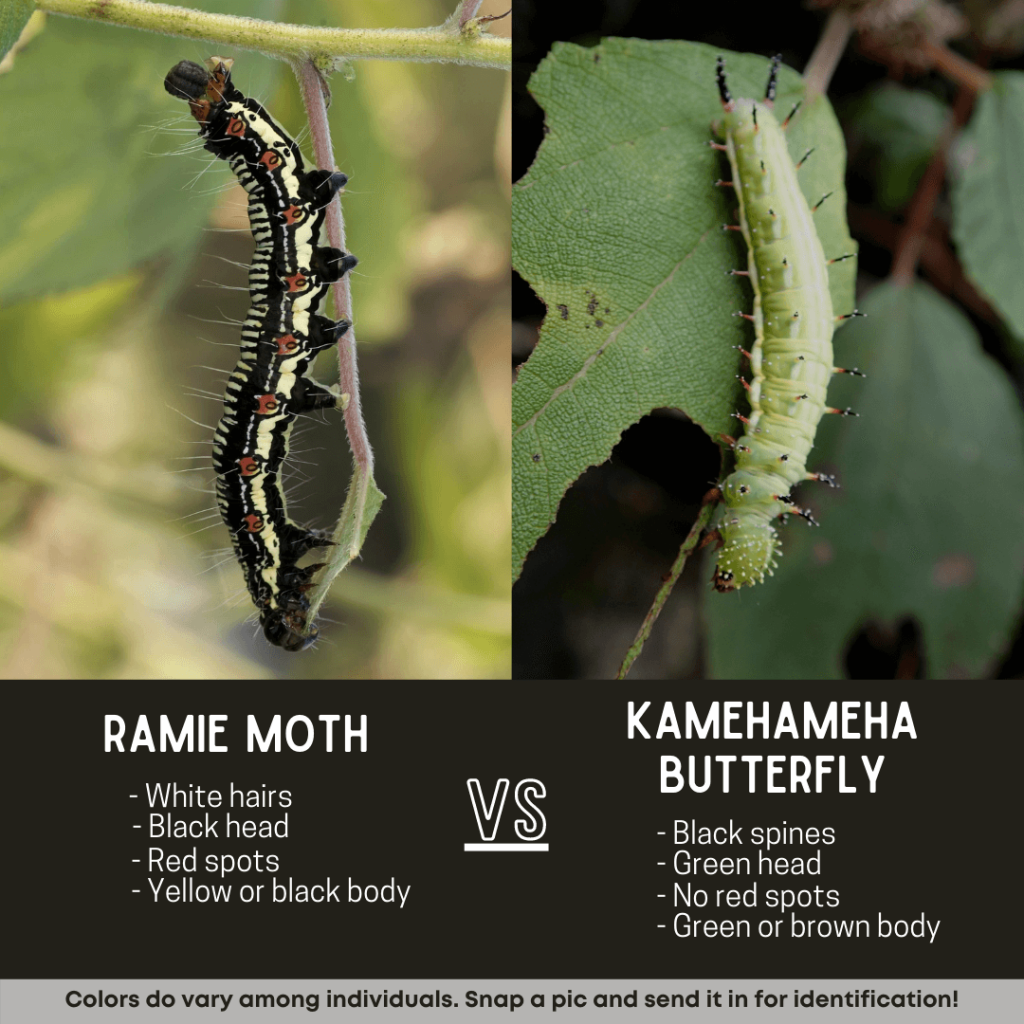The ramie moth is a destructive caterpillar that can completely defoliate native māmaki. This caterpillar was first discovered in November 2018 on Maui where it was destroying māmaki plants. Since then, it has spread to the Big Island and was found on the east side in November 2020. This is the first record of this pest in the United States. It’s known to feed on members of the nettle family (Urticaceae). Besides harming the māmaki plant, this caterpillar also poses a threat to the native Kamehameha butterfly as it competes for the same food resources.
The young ramie caterpillar will start by chewing holes in the middle of the leaf and create even larger gaps as they grow, leaving only the main veins. Kamehameha caterpillars start eating from the edge of the leaves. Young Kamehameha caterpillars will fold over the edges of the leaf to make a tent for protection.

Photo of Kamehameha caterpillar by Forest and Kim Starr

Adult ramie moth
Ramie Moth: appearance
Ramie moth (RM) eggs are about 1mm in diameter and are a clear-white color. The eggs are laid individually on the underside of leaves. Kamehameha butterfly (KB) eggs are more brownish in color. The first instar of RM caterpillars are green and black. As they get larger, they change color to become yellow and black with red/orange spots and thin white hairs. There is also a black variant of the RM caterpillar, but it still has the iconic red spots and white hairs. The RM caterpillar can look very similar to the KB caterpillar and they are found on the same plants, so it is important to make a positive identification before taking any action! Young KB caterpillars also have black-colored heads, but they turn green or brown as they get older.
Unlike KB caterpillars, the ramie caterpillars are aggressive…at least, relatively aggressive for a caterpillar! When disturbed the caterpillar may lift its head and start wiggling around, and might even vomit a green fluid. These actions are to dissuade predators but are not displayed by KB caterpillars.
The adult ramie moth is about 3 cm long with a 6-9 cm wingspan. It is mostly brown, with black markings on the scalloped wings. Hindwings have silvery-blue markings. They can be challenging to identify, so please send a picture of your suspect caterpillar to BIISC or your local HDOA or CTAHR office for identification.
Be careful when moving māmaki and olonā plants, and do not move them interisland. Always inspect your plants before moving them.
If you see a ramie moth caterpillar, please capture it and report it to 643-pest.org.
